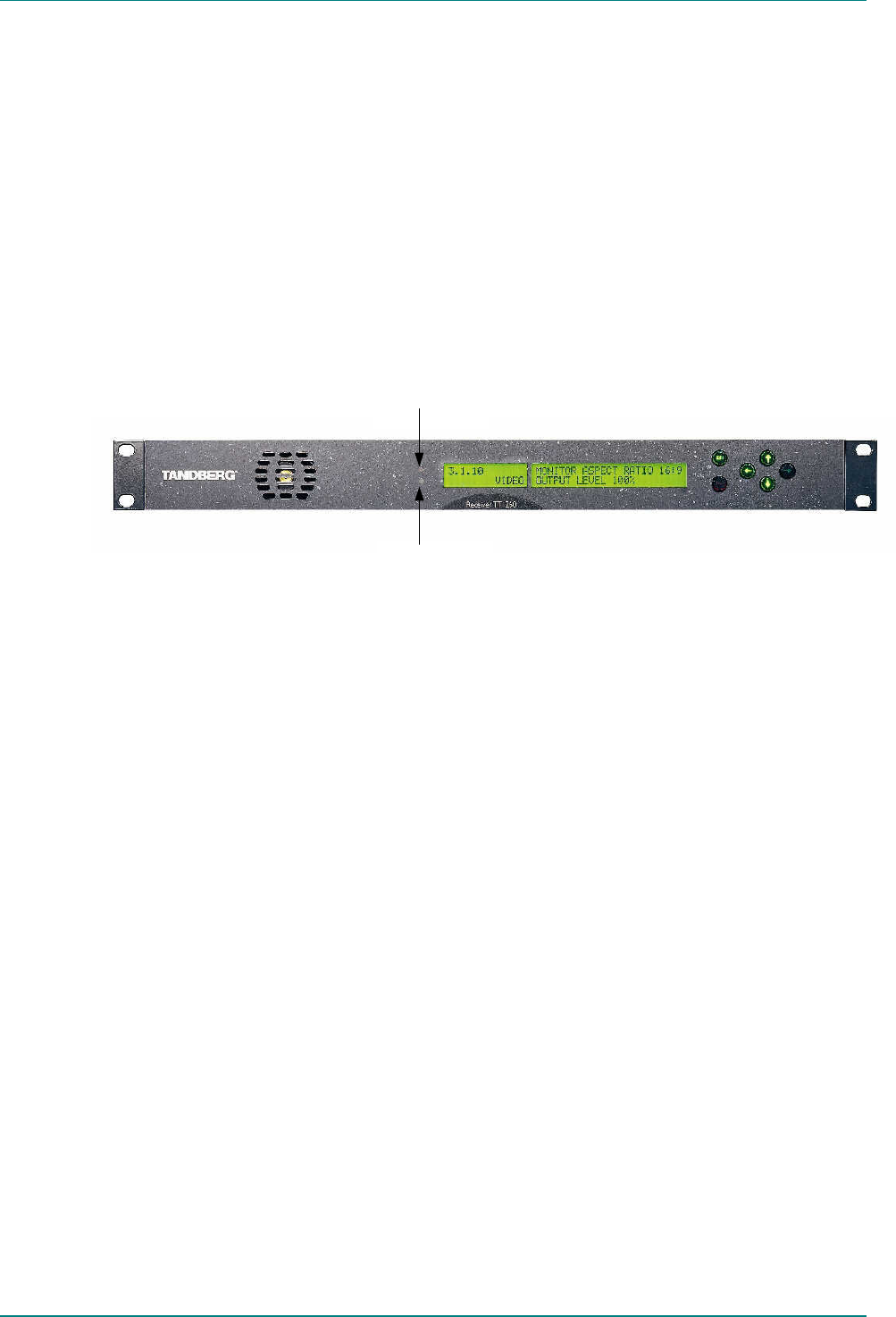
Alarms
Instruction Manual: TT1260 Standard Definition Professional Receiver/Decoder Page 4-3
ST.TM.E10100.1
4.1 Introduction
There are two Front Panel LEDs that indicate the status of the TT1260.
These are used to indicate abnormal performance of the unit.
4.2 Location of the Alarm and Indication LEDs
The red ALARM LED is used to indicate an equipment fault condition, for
example a missing or faulty input signal. It should be off during correct
operation, although it may be lit briefly during power-up.
The green LOCK LED is used to indicate that the equipment is locked to a
transport stream when lit, and indicates correct conditions and correct
system functioning.
Figure 4.1: Front Panel LEDs
4.3 ALARM LED
The TT1260 supports a summary alarm signal that is active when one or
more of the individual monitored alarm conditions are active. It allows
masking of unwanted alarm conditions so that they do not contribute to
the summary alarm. Configuration of alarms is via the Front Panel and
remote control interfaces. The state of the summary alarm is reflected by
the ALARM LED on the front panel where red represents an alarm, and off
represents no alarm.
This LED provides a high-level indication of an alarm within the unit. The
alarm list depends on the TT1260 model. The unit continuously monitors
for the following alarm conditions during normal operation: (if not masked
– see Menu #5, Annex C, Menus):
· No transport stream
· Video not running
· Audio 1 not running
· Audio 2 not running
It is possible to signal additional alarms depending on the transport stream
input type and optional functionality in the unit.
Satellite inputs:
· Bit Error Rate (BER) above (programmable) threshold
Alarm LED
Lock LED


















